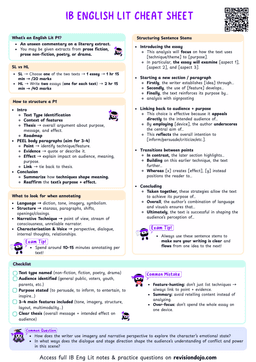Step-by-Step Guide: How to Write a Strong Paper 2 Conclusion
- Your conclusion is your last chance to impress the examiner and tie everything together. Here’s why it’s essential:
- It leaves a lasting impression: The examiner reads it last, make it count by ending clearly and confidently.
- It shows big-picture thinking: A good conclusion reflects on the deeper meaning of your analysis, not just the paragraph-level detail.
- It reinforces key ideas: Summarising your thesis and main points helps clarify your argument without sounding repetitive.
- It adds insight: Top-scoring conclusions offer a final judgment or reflection e.g., which text is more impactful or relevant.
- It affects your grade: Weak conclusions can lower your score in Criterion C (Focus, Organisation, Development), even if the body is strong.
Step 1: Restate the Prompt and Texts
- Briefly remind the examiner of the focus of the essay and the texts you've analysed.
- Use fresh wording.
- Clarify the scope of the discussion.
Both Shakespeare’s Macbeth and Miller’s The Crucible examine how ambition and fear interact under systems of power.
Step 2: Summarise Your Thesis and Main Points
- Recap your central argument and the broad themes or umbrella points you covered.
- Avoid listing every point.
- Emphasise your core perspective.
While both texts show ambition as destructive, Macbeth’s downfall stems from internal corruption, while the townspeople in Salem are driven by external hysteria.


